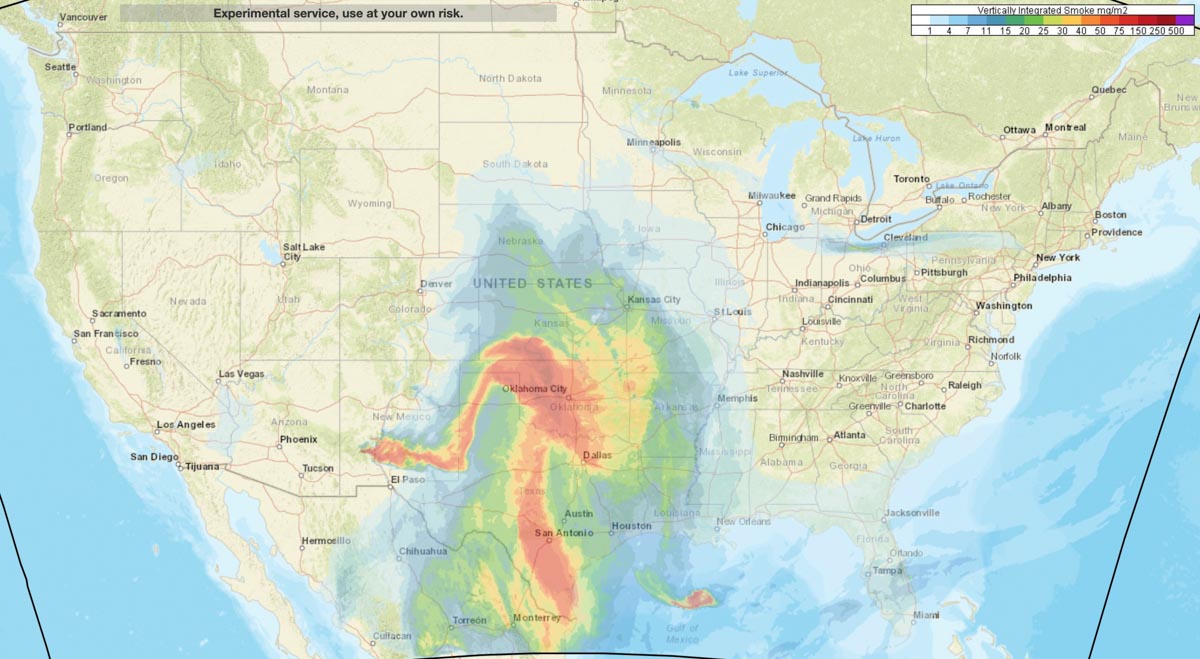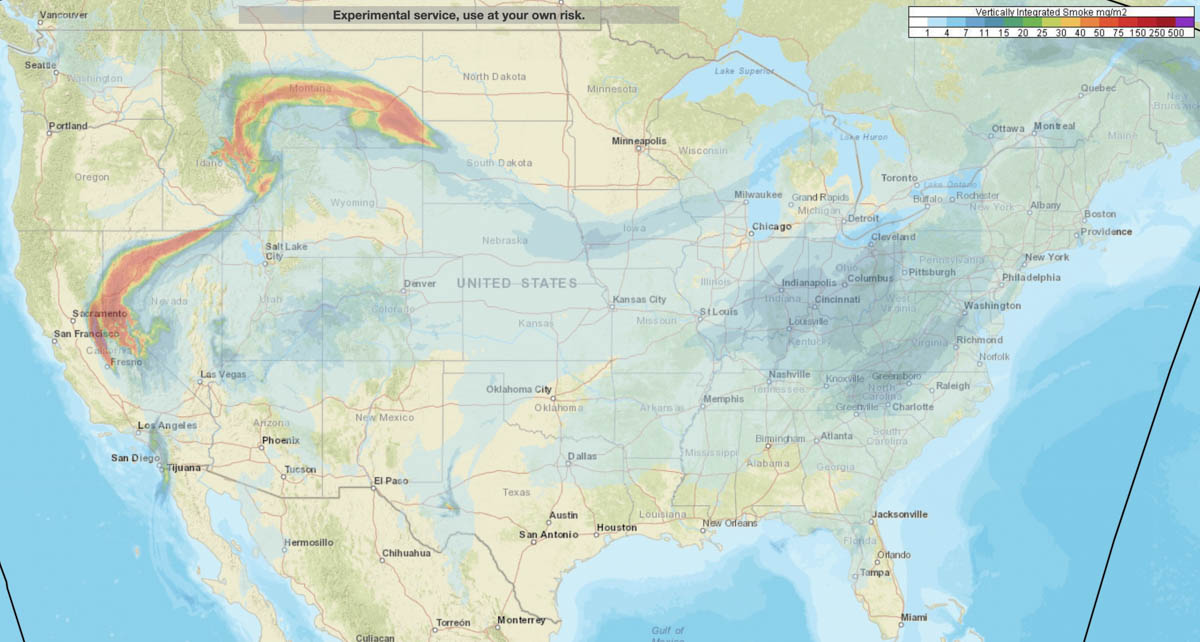
NOAA has produced a forecast for the distribution of vertically integrated wildfire smoke at 7 a.m. MDT Sunday July 24. Locations to be hit the hardest are areas in Northern California, Northern Nevada, Eastern Idaho, and Montana.
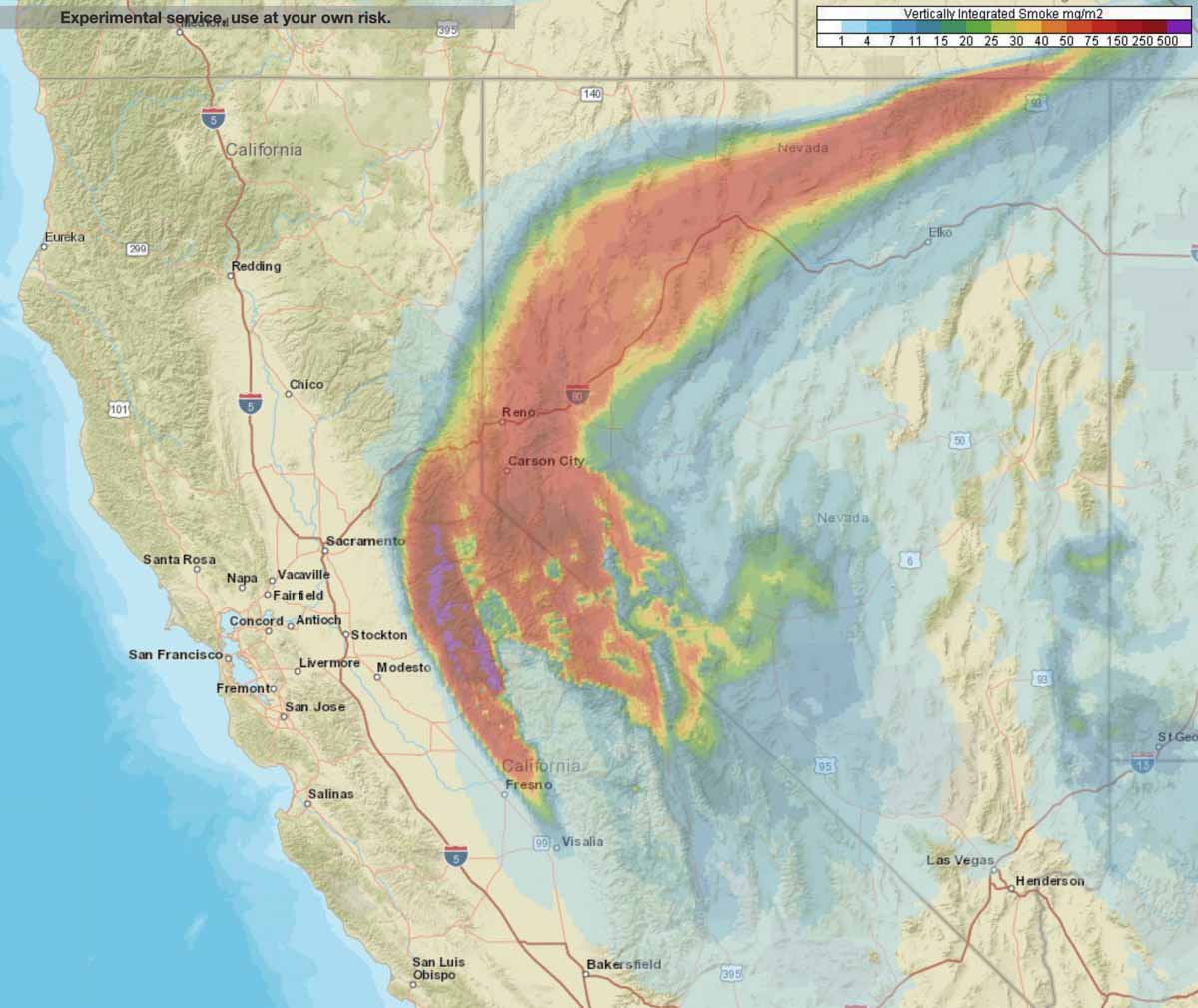
News and opinion about wildland fire

NOAA has produced a forecast for the distribution of vertically integrated wildfire smoke at 7 a.m. MDT Sunday July 24. Locations to be hit the hardest are areas in Northern California, Northern Nevada, Eastern Idaho, and Montana.

We asked scientists how the findings apply to wildland firefighters

The International Agency for Research on Cancer (IARC), the cancer agency of the World Health Organization (WHO), has evaluated the carcinogenicity of occupational exposure as a firefighter.
A Working Group of 25 international experts, including 3 Invited Specialists from 8 countries was convened by the IARC Monographs program for a meeting in Lyon, France.
After thoroughly reviewing the available scientific literature, sufficient evidence led the Working Group to classify occupational exposure as a firefighter as carcinogenic to humans.
A summary of the final evaluations has now been published. The detailed assessment will be published in The Lancet Oncology in 2023 as Volume 132 of the IARC Monographs.
Evidence for cancer in humans
The study found that occupational exposure as a firefighter causes cancer. There was sufficient evidence for cancer in humans for mesothelioma and bladder cancer.
There was limited evidence for cancer in humans for the following cancer types: colon cancer, prostate cancer, testicular cancer, melanoma of the skin, and non-Hodgkin lymphoma.
Strong mechanistic evidence
The evaluation of the mechanistic evidence was based on exposures associated with fighting structure and wildland fires. There was strong mechanistic evidence in exposed humans that occupational exposure as a firefighter exhibits 5 of the 10 key characteristics of carcinogens: “is genotoxic”, “induces epigenetic alterations”, “induces oxidative stress”, “induces chronic inflammation”, and “modulates receptor-mediated effects”.
Exposure of firefighters
Firefighters are exposed to a complex mixture of combustion products from fires (e.g. polycyclic aromatic hydrocarbons, volatile organic compounds, metals, and particulates), diesel exhaust, building materials (e.g. asbestos), and other hazards (e.g. heat stress, shift work, and ultraviolet and other radiation). In addition, the use of flame retardants in textiles and of persistent organic pollutants (e.g. per- and polyfluorinated substances) in firefighting foams has increased over time.
This mixture may include many agents already classified by the IARC Monographs program in Group 1 (carcinogenic to humans), Group 2A (probably carcinogenic to humans), and Group 2B (possibly carcinogenic to humans). Dermal exposure, inhalation, and ingestion are common routes of exposure, and biomarker studies among firefighters have found enhanced levels of markers of exposure to polycyclic aromatic hydrocarbons, flame retardants, and persistent organic pollutants.
Most studies of firefighter health evaluate structural firefighters. We asked Dr. Kenny Fent and Dr. Kathleen Navarro of the National Institute for Occupational Safety and Health (NIOSH) questions about how these findings apply to wildland firefighters. Here is their joint response:
Summary of IARC Evaluation for Wildland Firefighters
The IARC evaluation of Occupational Exposure as a Firefighter included a review of the available scientific literature on occupational exposures, cancer epidemiology and the key characteristics of carcinogens. The evaluation did not differentiate between structural and wildland firefighters in making the determination of carcinogenicity. This is because the working group was not able to differentiate structure fire exposures (and other exposures) from wildfire exposures for firefighters in at least some of the cancer cohort studies that were included the evaluation.
In addition, many of the studies that provided the evidence of carcinogenicity included the evaluation of the key characteristics of carcinogens (intermediate health outcomes on the pathway to cancer). These included studies of wildland firefighters working on wildfires and prescribed fires.
Lastly, the exposure studies reviewed supported that both structural and wildland firefighters were exposed to similar types of carcinogens. As a result, the definition of “occupational exposure as a firefighter” for the IARC evaluation was kept broad and included a variety of hazards resulting from fires (e.g., structure, wildland, and vehicle fires) and other events (e.g., vehicle accidents, medical incidents, hazardous material releases, and building collapses).
Is mesothelioma only caused by exposure to asbestos, and are wildland firefighters generally exposed to it?
Yes, mesothelioma is caused by exposure to asbestos. Asbestos exposure is generally rare among wildland firefighters, with the exception for wildland firefighters who commonly encounter built environments (especially buildings constructed before the 1970s), areas with contamination (e.g., Libby, MT) or naturally occurring asbestos. A past NIOSH Health Hazard Evaluation reported that exposure to total asbestos fibers in air were less than the lowest occupational exposure limits while conducting a prescribed burn. However, the highest concentrations measured were during tasks with greater plant and soil disturbance and where water was not used (e.g., fire line construction and dry mop-up).
Dr. Kenny Fent leads the National Firefighter Registry at NIOSH and was the chair of the exposure characterization subgroup for the IARC working group.
Dr. Kathleen Navarro leads the Wildland Firefighter Safety and Health program at NIOSH and was a Representative of a national health agency for the IARC evaluation.
Wildfires in Texas and Idaho are producing most of the smoke
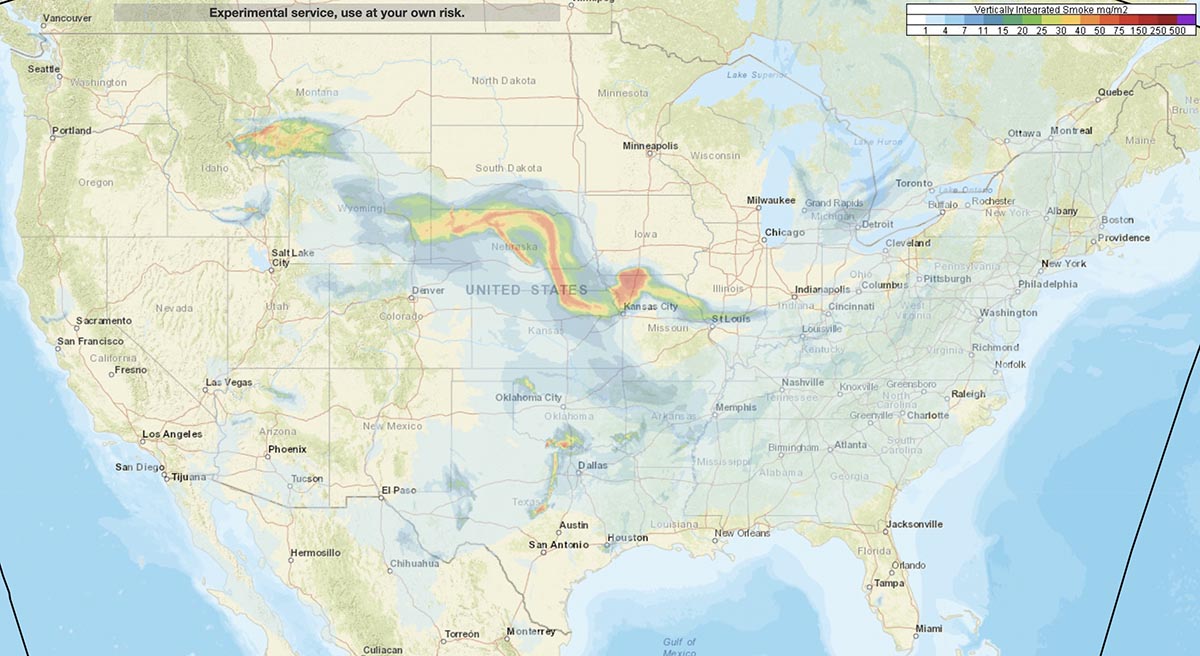
The Moose Fire in eastern Idaho is generating copious amounts of smoke Wednesday that is predicted to travel southeast across Montana, Wyoming, Nebraska, Kansas and Missouri. Fires in Texas are also producing smoke. The combination of smoke created Tuesday and Wednesday is drifting into most of the states in the midwest, southeast, and northeast.
Red Flag Warnings for extreme wildfire danger are in effect Wednesday in portions of California, Wyoming, South Dakota, Oklahoma, and Texas.

For 10 a.m. PDT July 11, 2022

NOAA has issued their forecast for the distribution of smoke for 10 a.m. PDT July 11, 2022. The smoke is primarily originating from wildfires in California and Utah.
Numerous large wildfires are burning in New Mexico
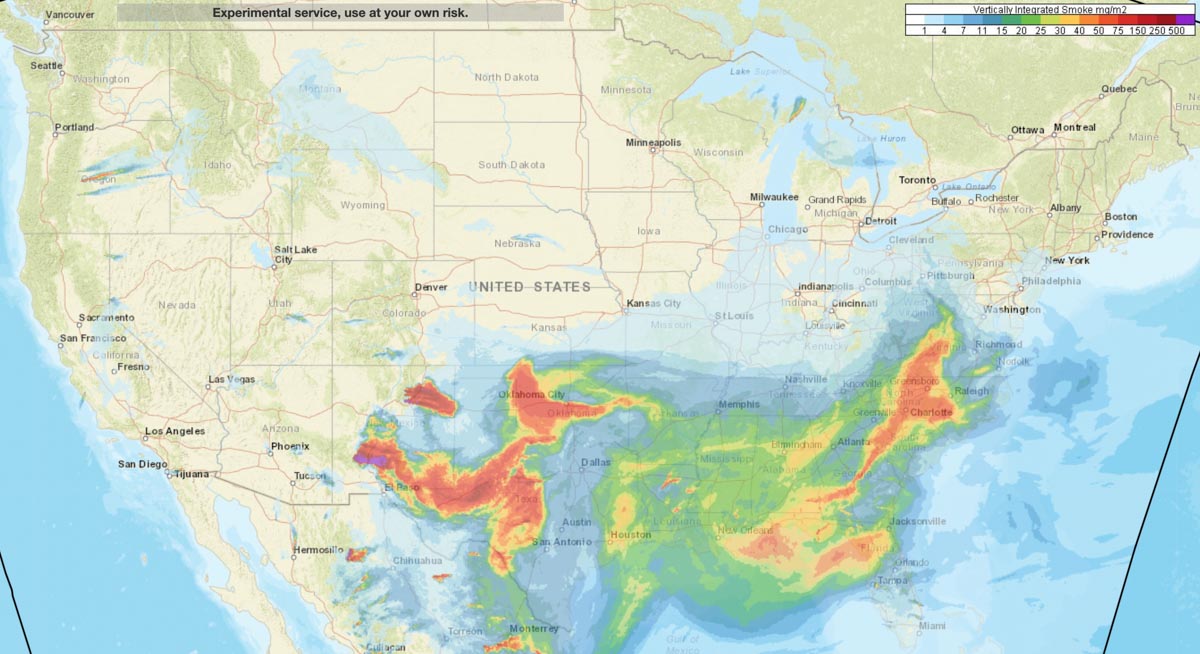
Smoke from wildfires in New Mexico is drifting into the Southeast United States. While much of the smoke is not at ground level except in East New Mexico and West Texas, the impact should at a minimum produce red sunsets for a couple of days across the Southern states.

More information about the New Mexico fires.
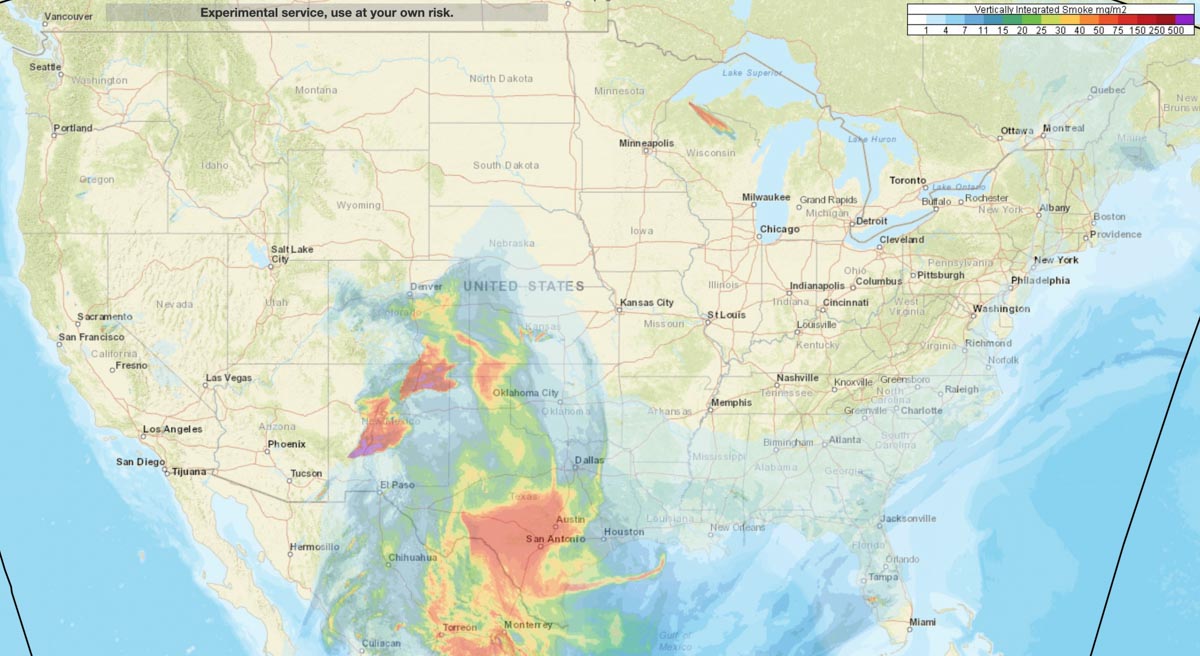
Large quantities of smoke from the Black and Calf Canyon Fires in New Mexico is impacting other states, including Texas, Oklahoma, Colorado, and Kansas.
